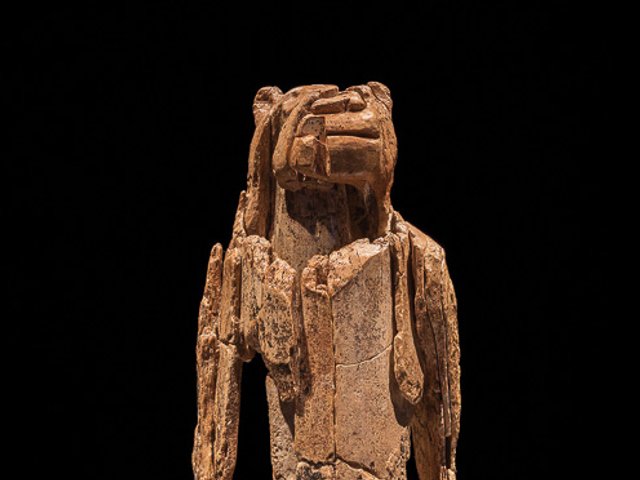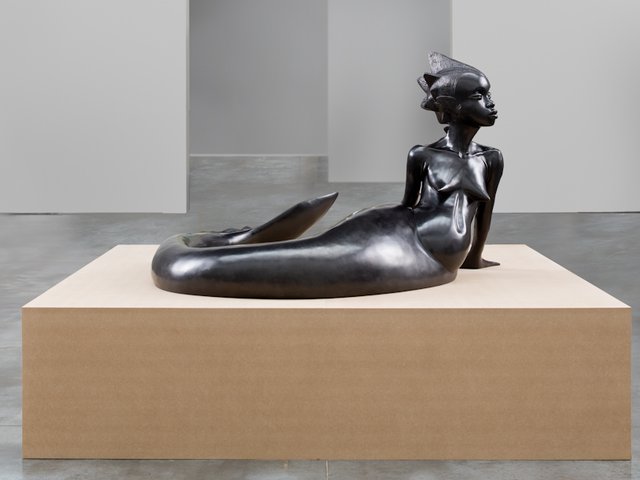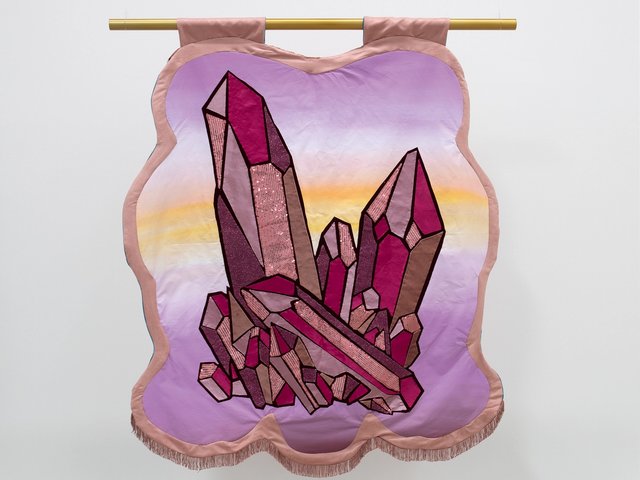The sixth edition of the Cooper Hewitt Design Triennial, Nature, explores the human relationship with the natural world, focusing particularly on environmental crises and the extinction of animal and plant species. The show assembles more than 60 projects by international teams of artists, designers, scientists, engineers, environmentalists and others and is organised into seven sections involving different strategies for collaborating with nature, including to understand, simulate, salvage, facilitate, augment, remediate and nurture. The show has been jointly organised with the Cube design museum in Kerkrade, Netherlands, where it is being shown simultaneously until 20 January 2020. Here are some of the highlights:
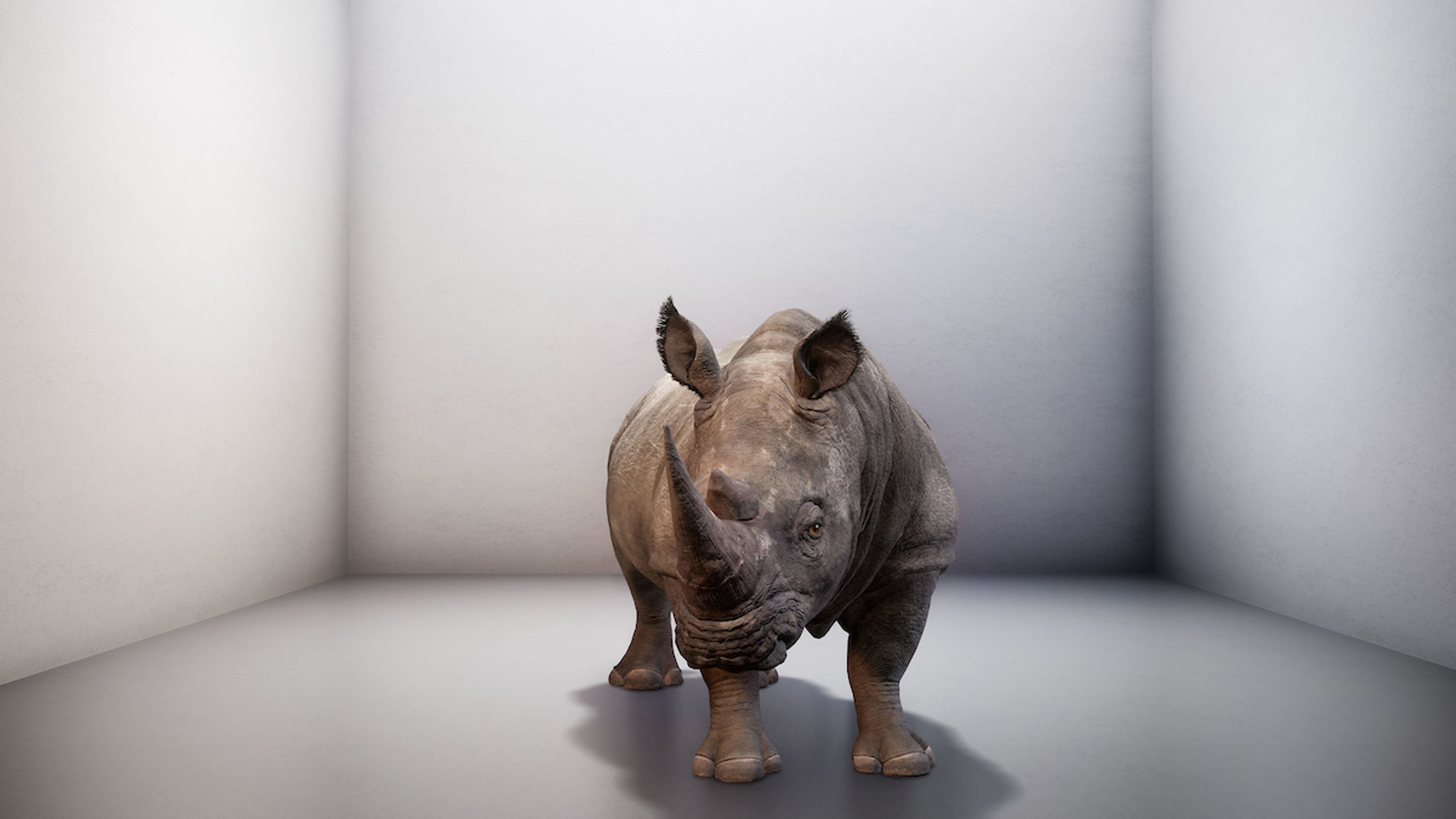
This video installation brings back to life the last male northern white rhino, Sudan, using AI-generated data. On 19 March last year, Sudan died in Kenya, bringing his subspecies to the brink of extinction and generating worldwide discussion on the impact of humans on wildlife. Since then, a series of controversial experimental biotechnologies have been proposed to resurrect the subspecies using Sudan’s genetic material. The rhino in the work develops from a series of pixels to a lifelike animal and moves around a small room. The work aims to question what errors can occur when humans attempt to recreate life artificially and underlines the impossibility of resurrecting extinct species. The Substitute, 2019, Alexandra Daisy Ginsberg and The Mill. Photo: Cooper Hewitt
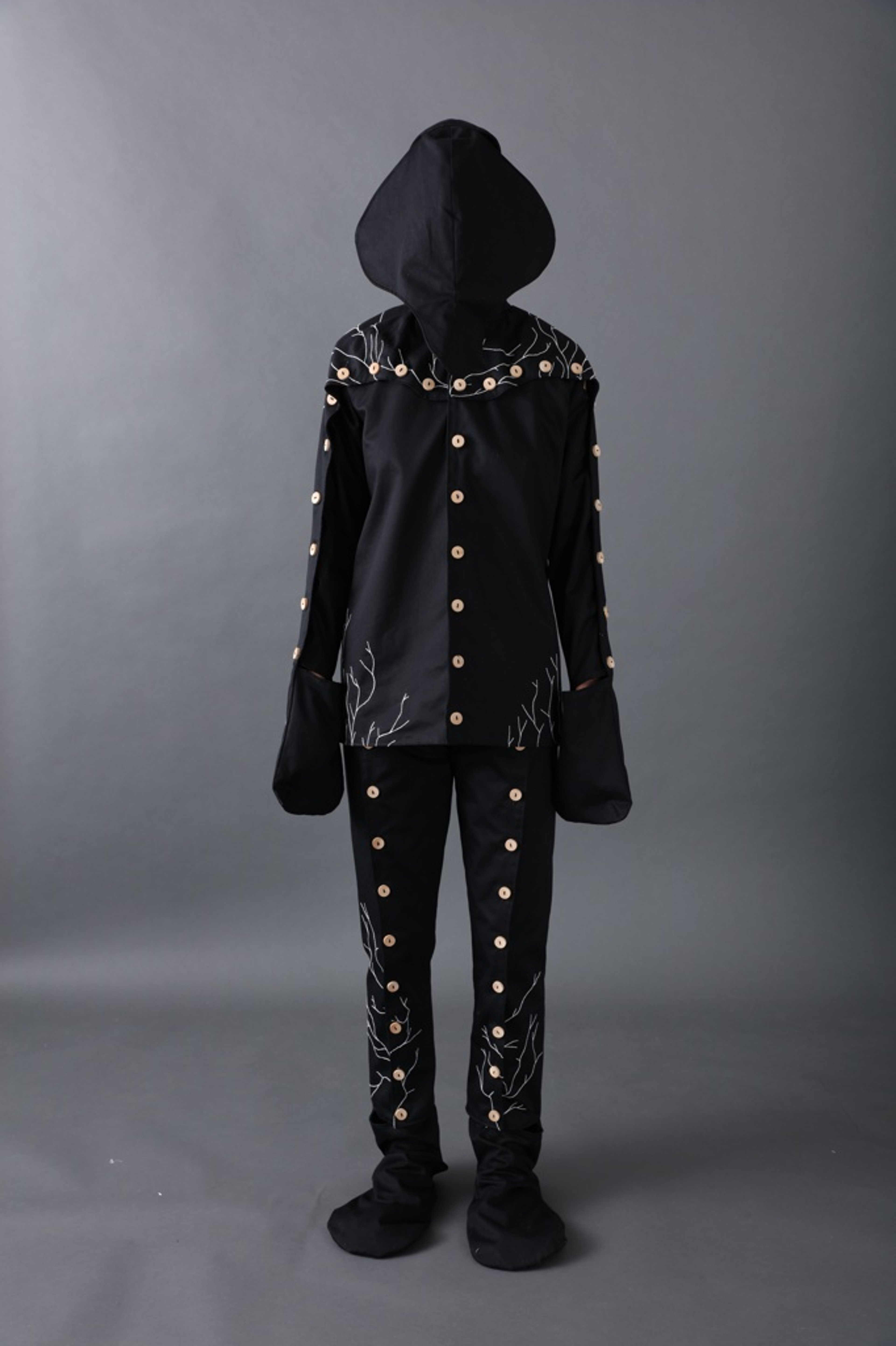
Reminiscent of Tibetan sky burials, in which all parts of the deceased are returned to the earth, this burial suit made from mycelium spores aims to curtail conventional Western funerary options (burial and cremation) that release toxic chemicals into the environment. The suit’s “biomix” aids decomposition, through which the dead are turned into mushrooms. Lee, a Korean artist, devised the Infinity Burial Project as part of her graduate programme at MIT, where she explored unorthodox recycling systems that aim to reimagine humans’ relationship with death. Infinity Burial Suit, 2016–ongoing; Jae Rhim Lee, Coeio. Photo: © Coeio, Inc./Jae Rhim Lee.
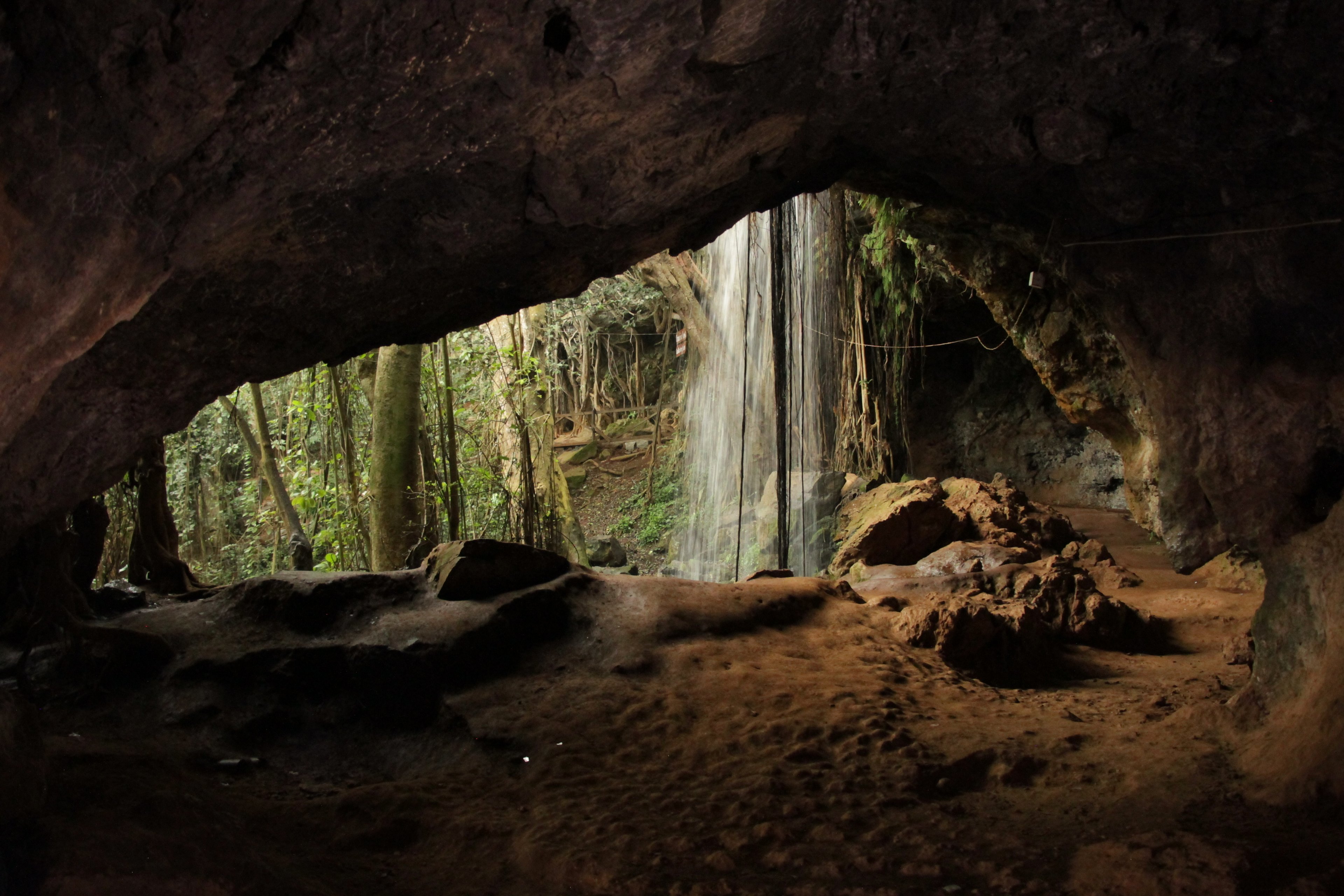
The Nairobi-based group Cave Bureau, headed by the artist Stella Mutegi, has reimagined the 2.5 million-year-old Mbai Cave as a museum. The popular tourist site northeast of Nairobi held late Stone Age artefacts and once served as a refuge for Mau Mau rebels but is now heavily littered. The group surveyed the cave for the first time with 3-D scanning technology, revealing records of human activity there throughout time. With this project, the group hopes that the National Museums of Kenya will reclassify the cave—described as an important Anthropogenic site, or one keyed to the impact of human activity—as a museum and to host educational programmes there. A museum testifying to the so-called Anthropocene era “already exists”, Mutegi explains. She adds, “It exists around the world as sites and artefacts that hold records of humanity’s impact on this planet”. Anthropocene Museum, 2017–19; Mbai Cave, Nairobi, Kenya, Concept: Stella Mutegi and Kabage Karanja. Photo: Kabage Karanja. © Cave
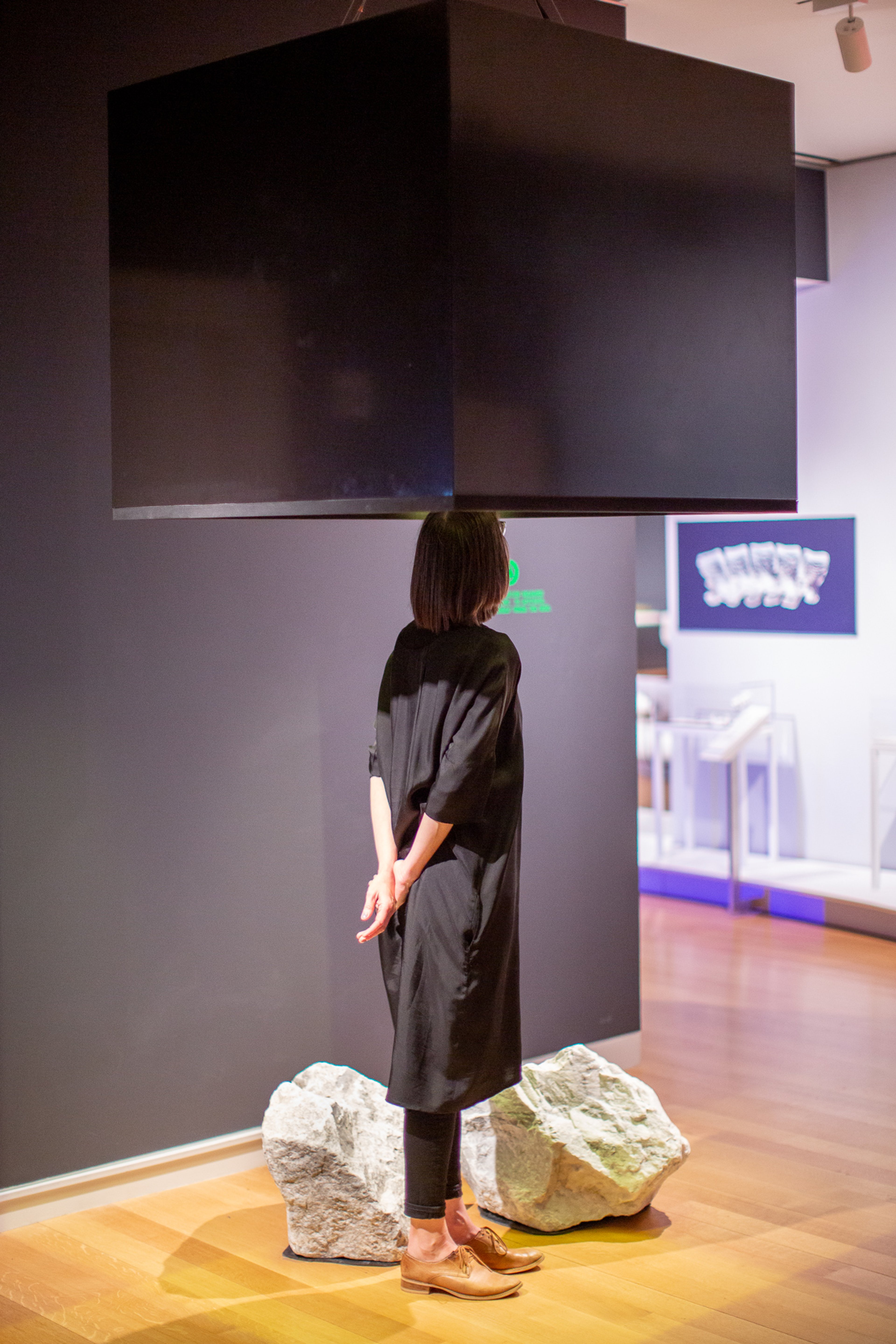
This “scent installation” allows visitors to savour the fragrances of extinct flowers, which are released from an overhead hood. The group—which includes Agapakis, a synthetic biologist, Ginsberg, a British multidisciplinary artist, and Tolaas, a Norwegian artist and researcher known for her work with scents—collaborated with Berlin-based researchers to extract various DNA sequences from historic samples of lost flowers, approximating the smell of certain flowers. The work provides a sensory experience of extinction. Resurrecting the Sublime (2018-19) by Christina Agapakis, Alexandra Daisy Ginsberg and Sissel Tolaas; manufactured by Gingko Bioworks. Photo: Chris Gauthier © Smithsonian Institution.
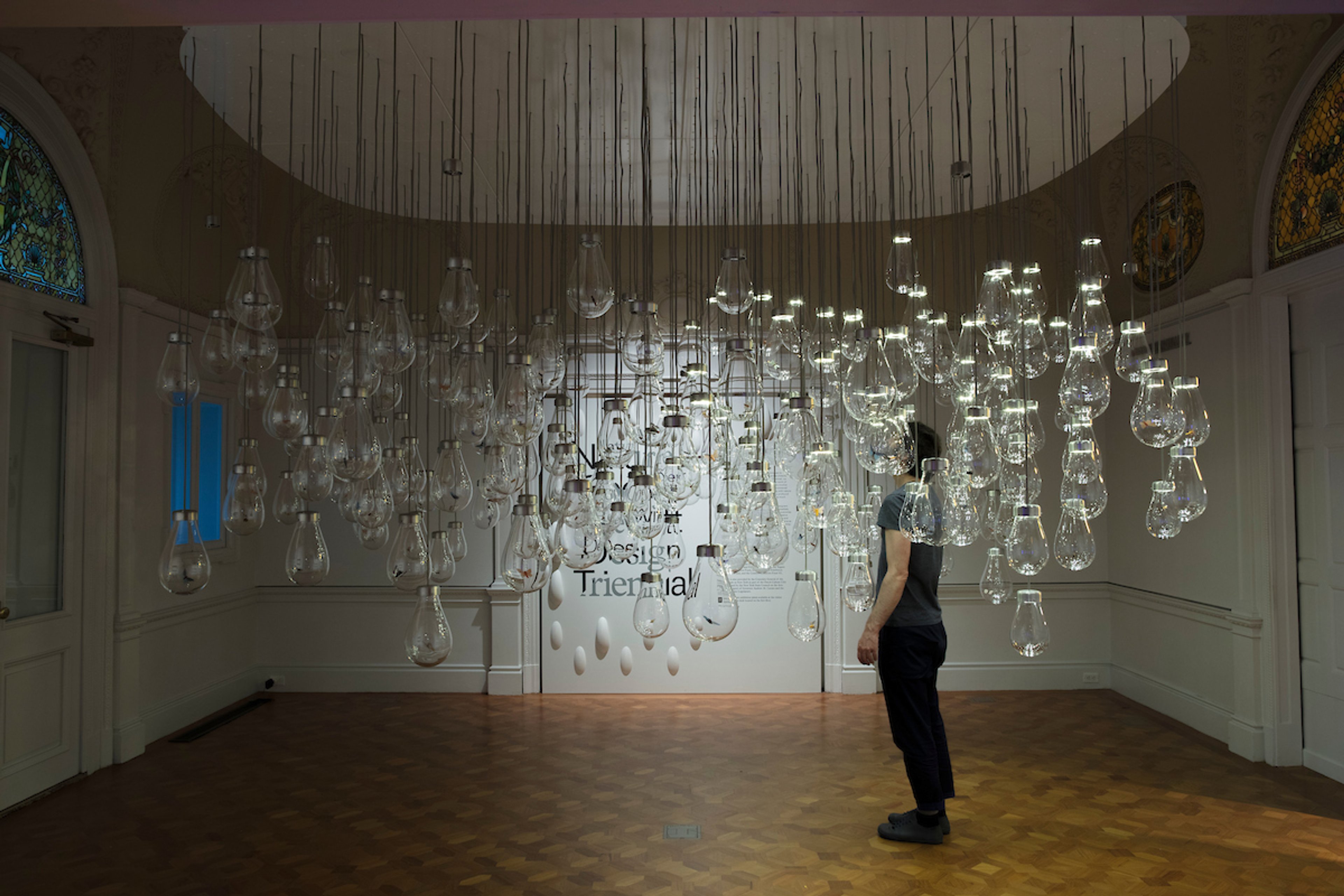
This buzzing chandelier-like installation contains various replicas of different insects, including some that are commonplace in nature and others that are endangered or extinct. The insects begin to flutter frantically within their bulbs as the viewer moves around the installation, which contains more than 200 individual light bulbs. The immersive kinetic work premiered at the London Design Festival in 2015 and aims to reference the transience of nature, which cannot realistically be contained or preserved. Curiosity Cloud, 2015-2019, Katharina Mischer and Thomas Traxler and Mischer’Traxler Studio. Photo: Matt Flynn.
This video installation brings back to life the last male northern white rhino, Sudan, using AI-generated data. On 19 March last year, Sudan died in Kenya, bringing his subspecies to the brink of extinction and generating worldwide discussion on the impact of humans on wildlife. Since then, a series of controversial experimental biotechnologies have been proposed to resurrect the subspecies using Sudan’s genetic material. The rhino in the work develops from a series of pixels to a lifelike animal and moves around a small room. The work aims to question what errors can occur when humans attempt to recreate life artificially and underlines the impossibility of resurrecting extinct species. The Substitute, 2019, Alexandra Daisy Ginsberg and The Mill. Photo: Cooper Hewitt
Cooper Hewitt's Design Triennial considers our alliance with the Earth
Projects range from animating a white rhino to creating an environmentally friendly ‘burial suit’
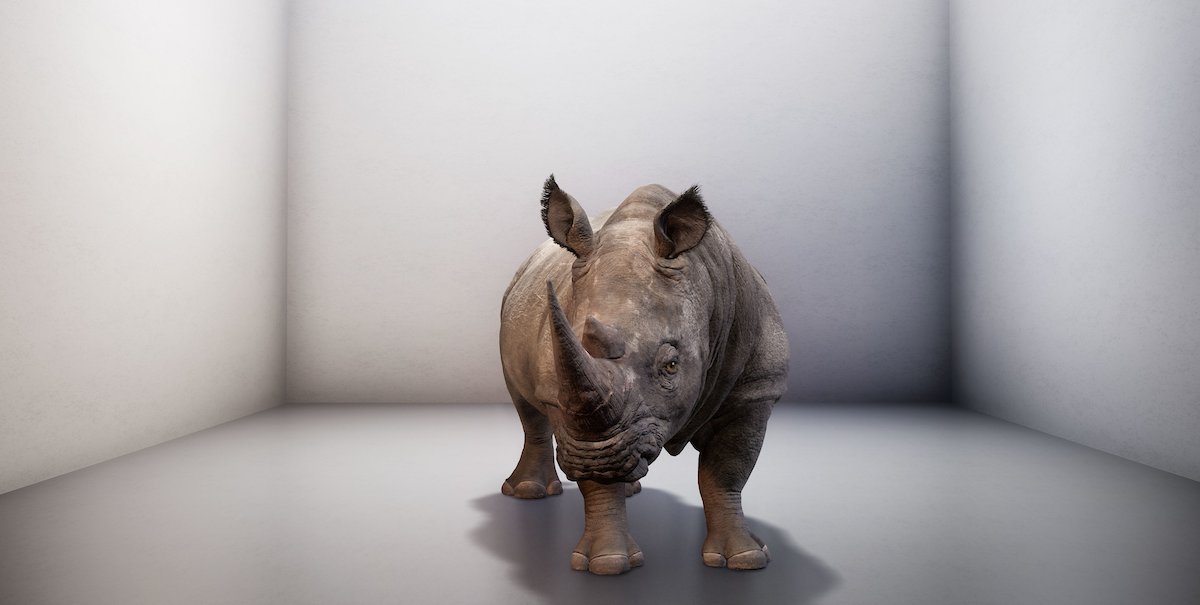
The Substitute (2019) by Alexandra Daisy Ginsberg, a CG animation and visualisation of the extinct male northern white rhino created by The Mill, with behavior based on research by DeepMind. Cooper Hewitt


